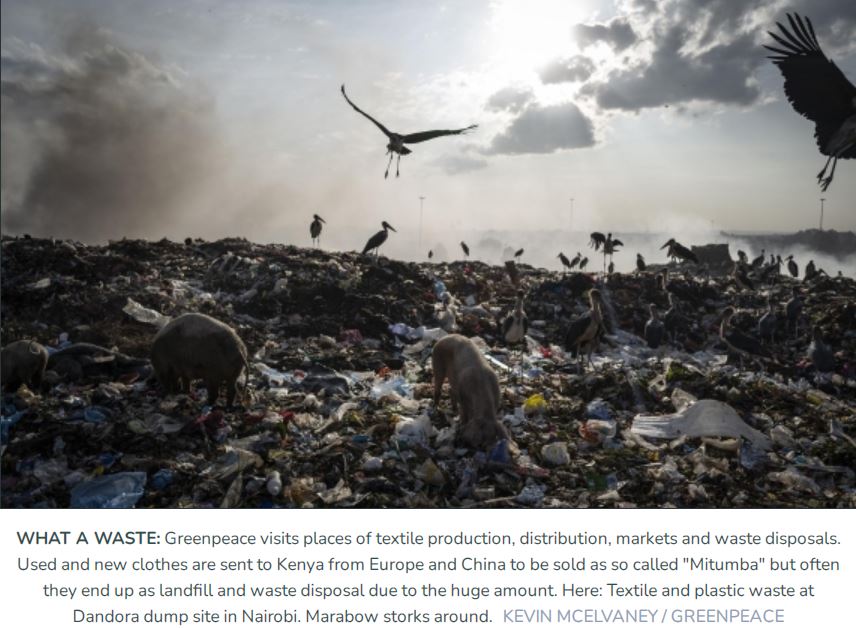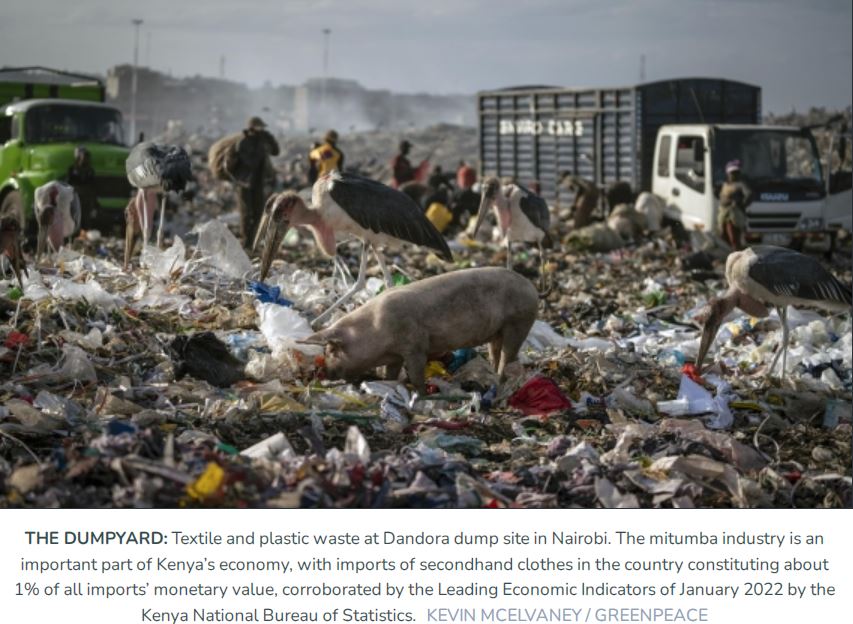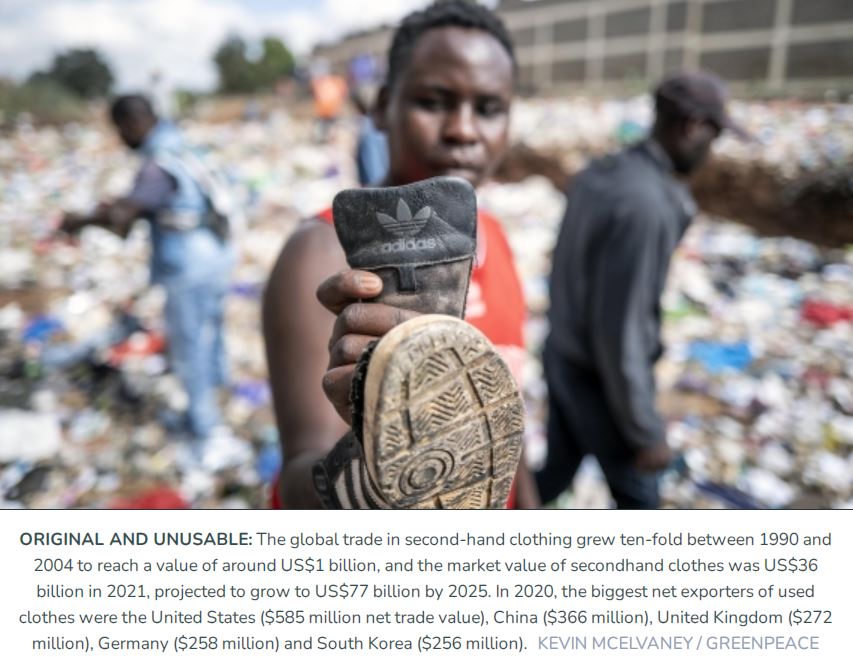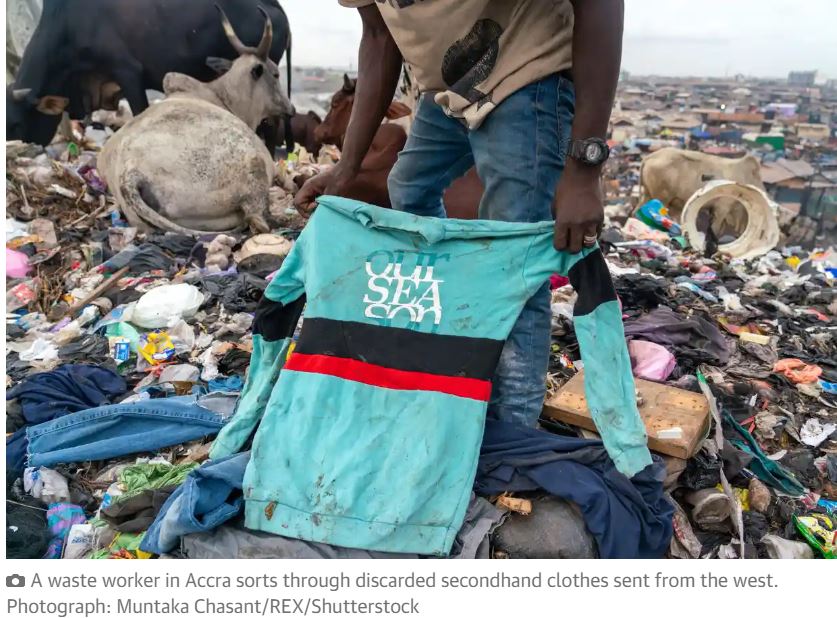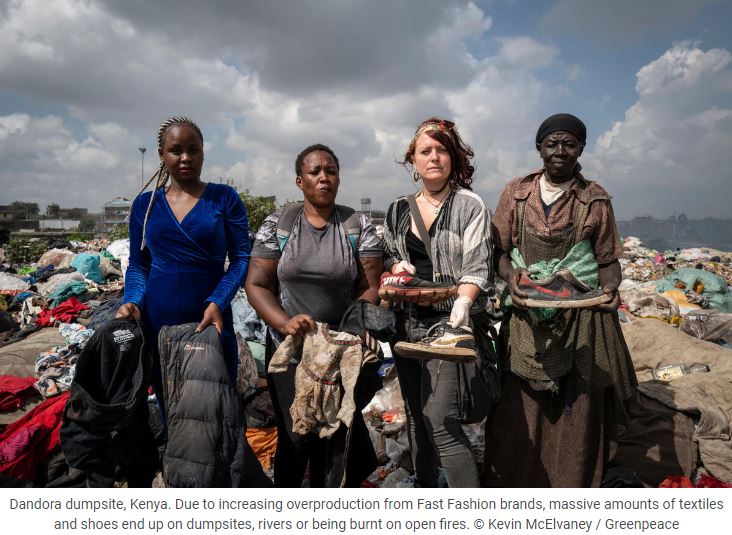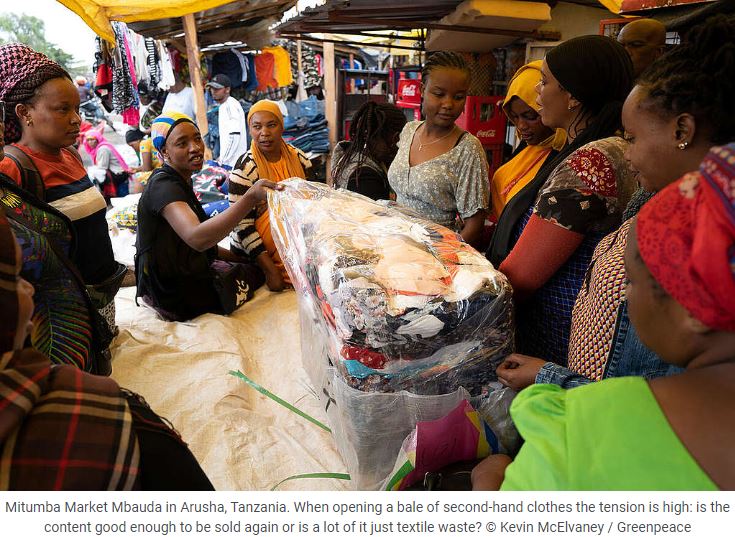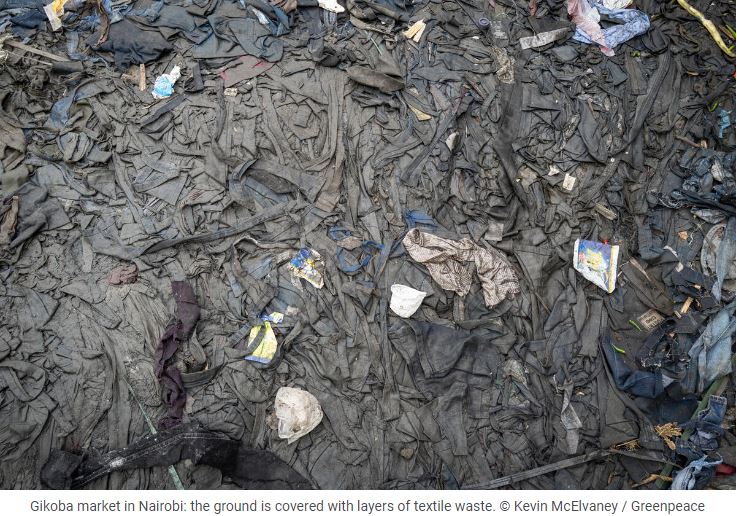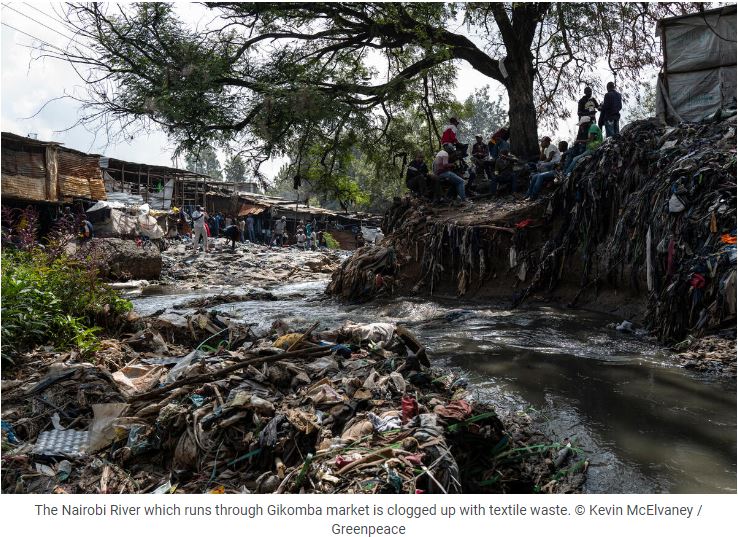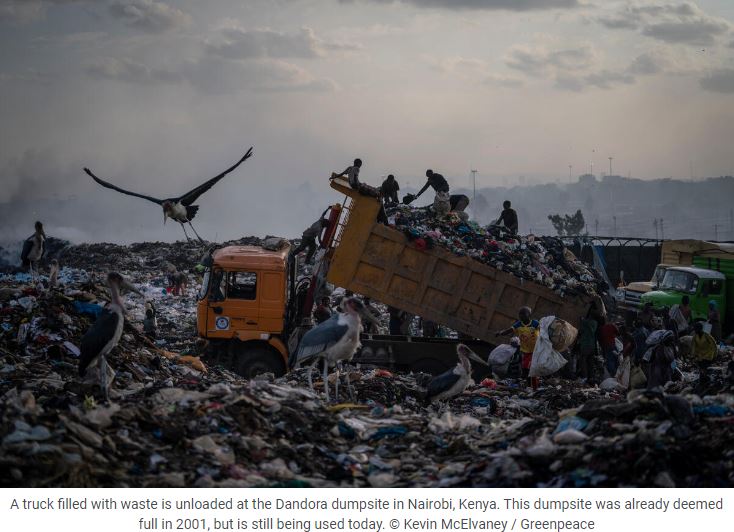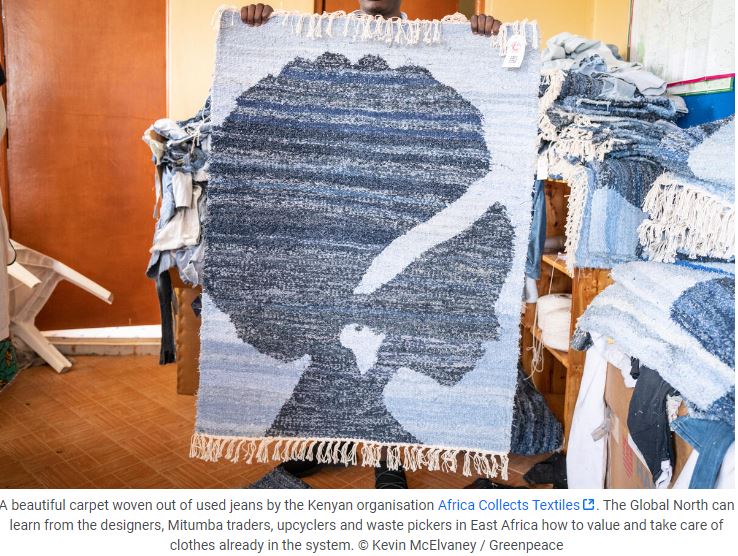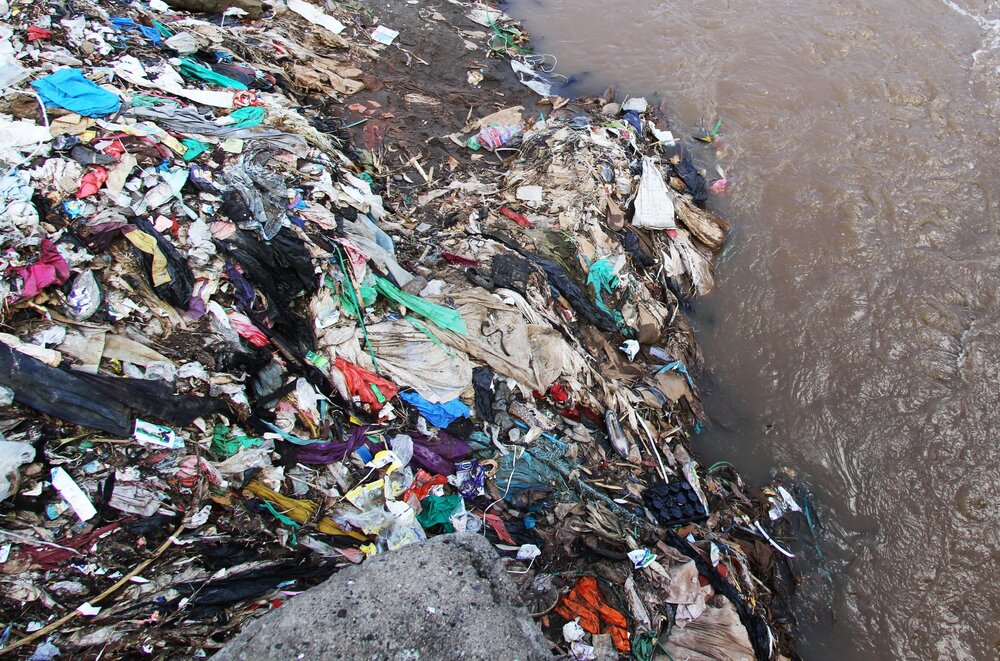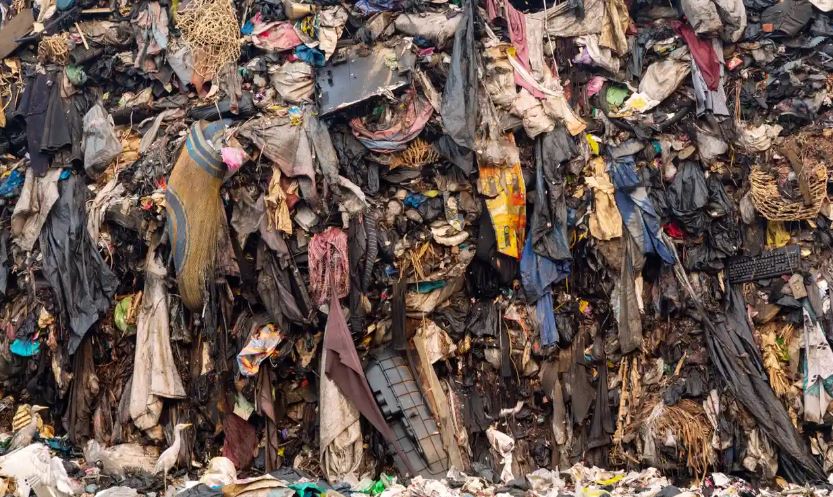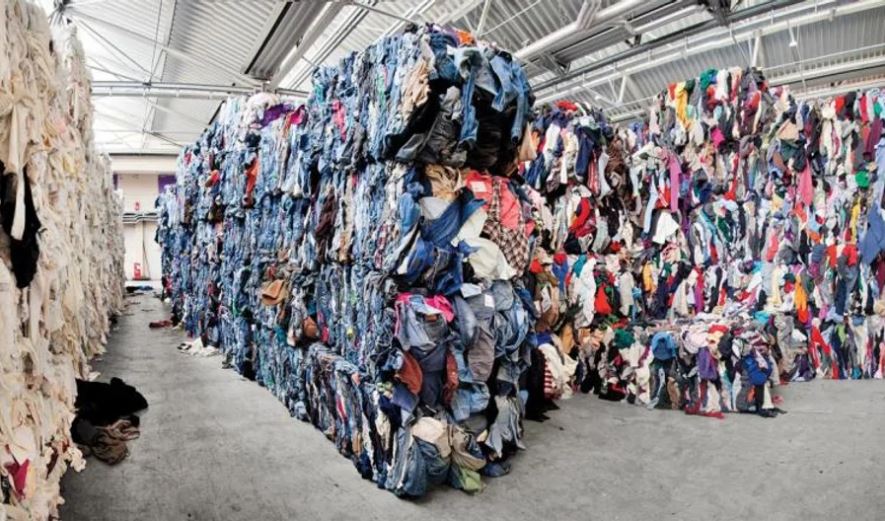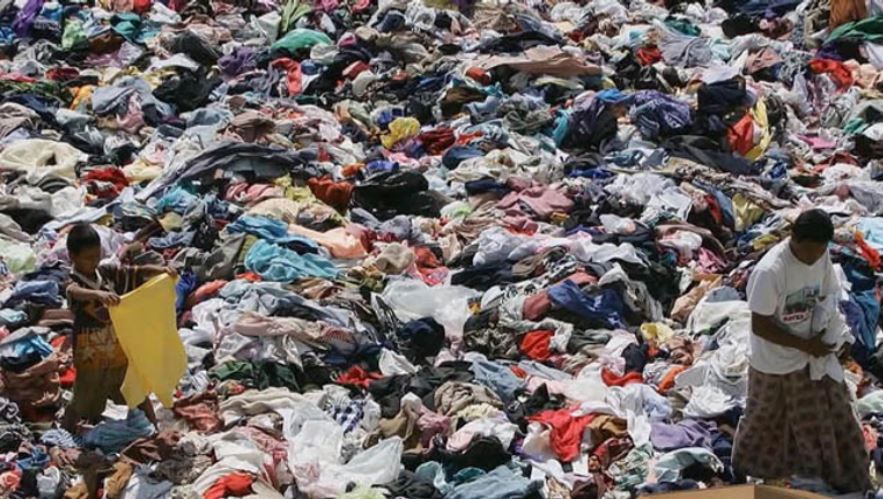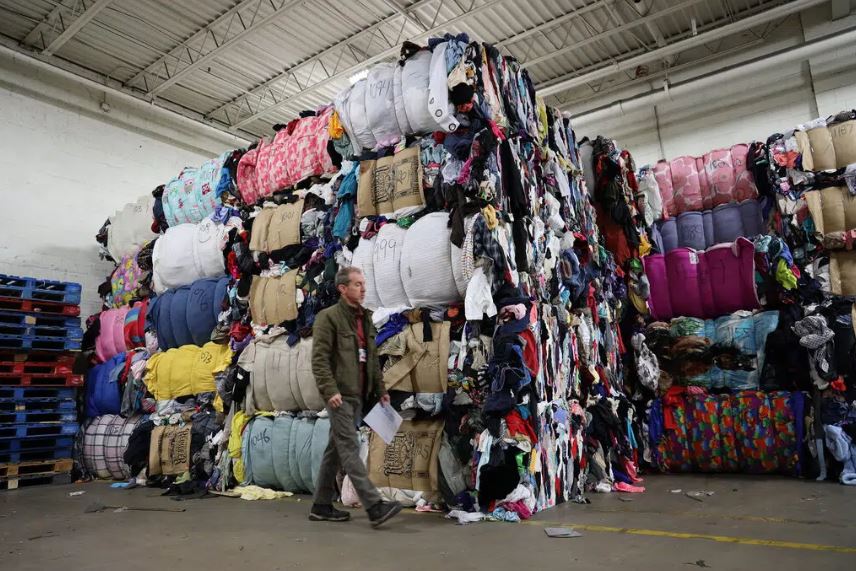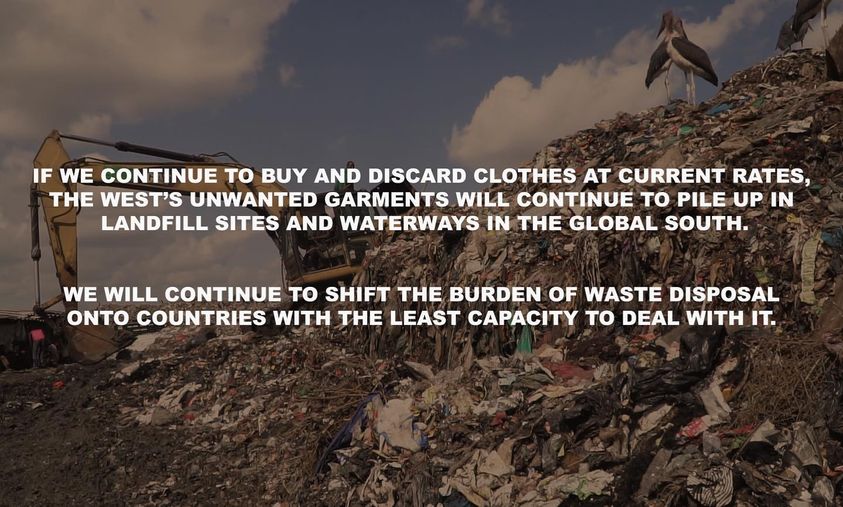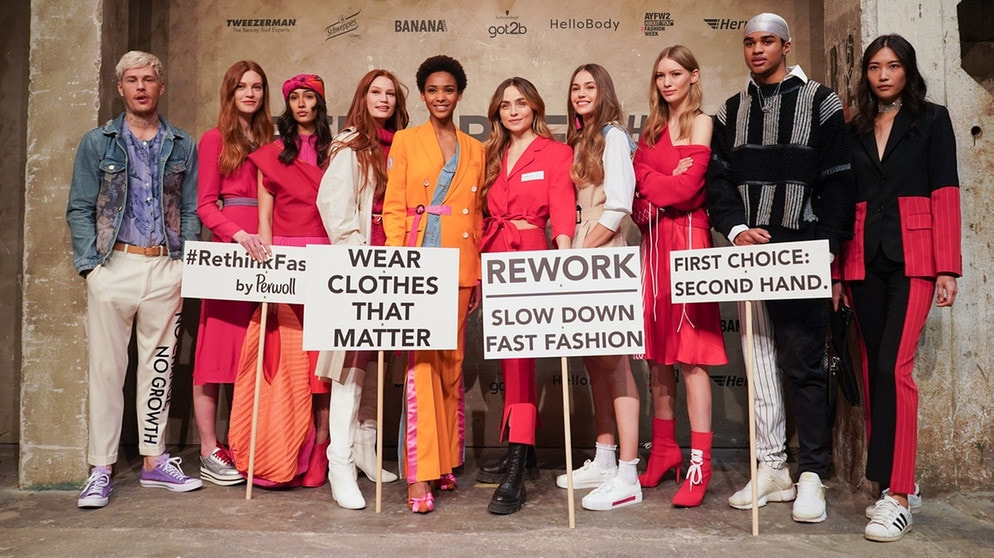27.10.2022
How Fast Fashion Is Using Kenya As A Dumping Ground For Textile Waste
Every year, $460 billion worth of clothes that can still be worn are discarded. Not only is that a waste of material, experts say it’s also needlessly contributing to the climate crisis. The textile sector accounts for up to 8 per cent of global greenhouse gas emissions. Almost 40% of the used clothes imported into Kenya are so bad they end up as textile waste. The discarded secondhand clothes take the form of almost 200 tonnes of textile waste every single day. The numbers are staggering. The report mentioned: "In Kenya, 185,000 tonnes of second-hand clothes were imported in 2019, and according to Africa Collect Textiles and other local sources local sources, 30–40% of mitumba is of such bad quality that it cannot be sold anymore. This means that 55,500 to 74,000 tonnes of it was actually textile waste. This amounts to about 150–200 tonnes of textile waste a day." Kenya does not has the requisite infrastructure (quite unlike the exporting countries), the fallout is this: textile waste is dumped everywhere, some of it is burnt leading to air quality issues, and a lot of the apparel trash gets dumped in rivers and drains, clogging them right away. That's not all. As the report points out, "The decomposing clothes release methane, a harmful greenhouse gas that contributes to climate change; synthetic fabrics like polyester and lycra can take hundreds of years to biodegrade. In addition, many clothes contain hazardous chemicals, used during the production process." Credit: DW
Poverty deprives people of adequate education, health care and of life's most basic necessities- safe living conditions (including clean air and clean drinking water) and an adequate food supply. The developed (industrialized) countries today account for roughly 20 percent of the world's population but control about 80 percent of the world's wealth.
Poverty and pollution seem to operate in a vicious cycle that, so far, has been hard to break. Even in the developed nations, the gap between the rich and the poor is evident in their respective social and environmental conditions.
Poverty and pollution seem to operate in a vicious cycle that, so far, has been hard to break. Even in the developed nations, the gap between the rich and the poor is evident in their respective social and environmental conditions.
